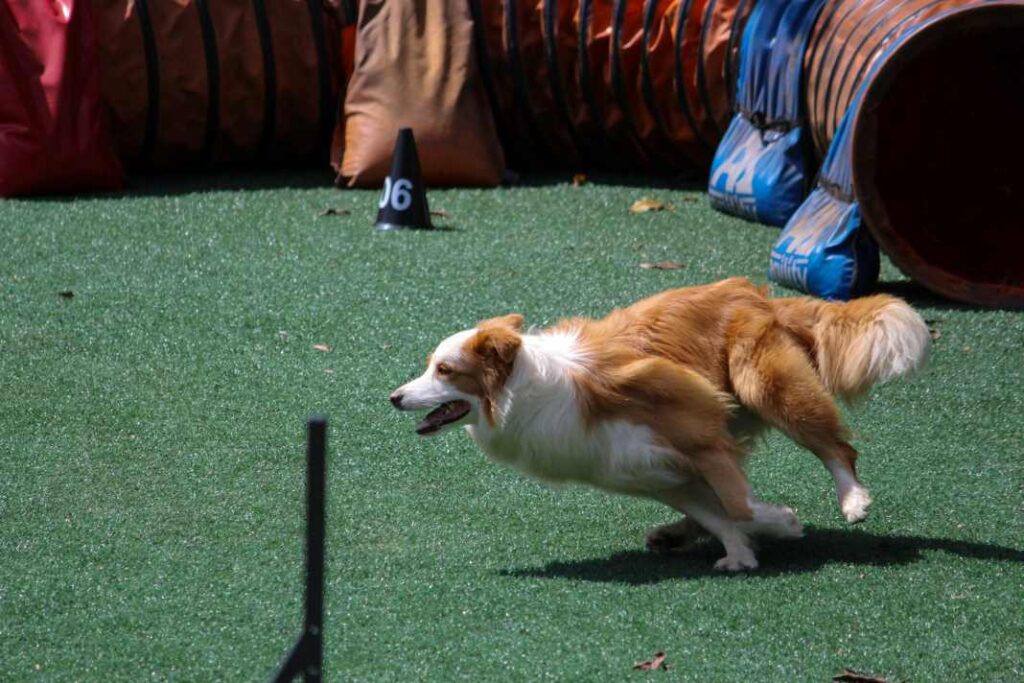In this article, we explore the factors affecting canine obesity, including age, diet choices, exercise levels, and the influence of pet owners, emphasizing the importance of prevention and management for the overall health and well-being of dogs.
Introduction to Canine Obesity
Canine obesity represents a multifaceted health issue that is influenced by various factors such as the dog’s age, the diet they are fed, their level of physical activity, and the lifestyle and habits of the dog’s owner.
This condition is becoming increasingly prevalent in dogs worldwide, posing a significant threat to their health, quality of life, and longevity. The rise in the number of overweight and obese dogs has underscored the urgent need for heightened awareness and education among pet owners.
It is vital for dog owners to recognize the early signs of obesity in their pets, comprehend the critical role that diet and exercise play in maintaining a healthy weight, and fully grasp the extent of the impact their own behaviors and choices have on their dog’s health.
By doing so, owners can take proactive steps to manage their pet’s weight effectively and prevent the onset of obesity.
Canine obesity, influenced by diet, activity, and owner habits, requires awareness and proactive management for dog health.
The importance of preventing canine obesity cannot be overstated, as it carries with it a host of potential health complications, including but not limited to cardiovascular diseases, diabetes, and joint issues.
Studies have shown that factors contributing to canine obesity are consistent across various socio-economic backgrounds, indicating that this is a global issue that transcends geographical and economic boundaries.
Moreover, education plays a pivotal role in combating this issue; owners who are well-informed about the nutritional needs of their dogs, the benefits of regular exercise, and the dangers of overfeeding are better equipped to prevent obesity in their pets.
As such, there is a pressing need for comprehensive strategies that not only focus on preventing canine obesity but also prioritize preventive measures through owner education and awareness.
Advertisement: Dogs love to chew, and that’s a good thing!
Chewing is a favorite activity for dogs, and it’s beneficial, too! It aids in maintaining dental hygiene, strengthens their jaws, and helps alleviate stress and ennui. Rather than curbing this instinctual habit, offer your dog something thrilling – Bully Stick Treats!
These all-natural, protein-packed chews outshine rawhide by offering added health advantages without harmful chemicals or hard-to-digest components. Crafted from pure beef, these one-ingredient delights assist in warding off tartar and plaque accumulation. Ideal for regular rewards or a tasty diversion to enjoy some tranquility.
Long lasting AND AFFORDABLE Bully Sticks
The Role of Age in Canine Obesity
The correlation between a dog’s age and its likelihood of becoming obese is a critical aspect of understanding canine obesity. As dogs grow older, they experience a slowing of metabolism, which can significantly contribute to weight gain if not managed properly.
This metabolic deceleration is often compounded by a concurrent decrease in physical activity, either due to the natural aging process or as a result of age-related health issues such as arthritis.
This diminished activity level reduces the amount of calories burned, creating a surplus that contributes to fat accumulation. For instance, research has identified that dogs over a certain age threshold are markedly more prone to obesity compared to their younger counterparts, emphasizing the need for targeted weight management strategies as dogs age.
Aging slows metabolism and decreases activity in dogs, raising obesity risks and necessitating adapted care strategies.
Moreover, the aging process can exacerbate existing health conditions or introduce new ones that further complicate the ability of senior dogs to maintain a healthy weight.
Conditions like osteoarthritis not only limit mobility but can also deter dogs from engaging in the physical activity necessary to stave off weight gain. The compounded effect of slowed metabolism and reduced activity underscores the importance of adapting canine care strategies as dogs age.
Adjustments might include dietary modifications to reduce caloric intake, incorporating gentler forms of exercise suitable for the dog’s physical condition, and regular veterinary check-ups to monitor and manage health issues that could influence weight.
Recognizing the multifaceted impact of aging on canine obesity is essential for owners to proactively manage their pet’s health and mitigate the risks associated with being overweight.

Impact of Diet Choices on Canine Weight
The composition of a dog’s diet is a critical element in controlling its weight, with the quality and quantity of food directly influencing the dog’s propensity for obesity.
Diets that are high in carbohydrates and fats, often found in many commercial dog foods and human leftovers, are associated with an increased risk of obesity in dogs.
In contrast, dogs fed a raw food diet tend to have lower obesity rates, suggesting that the type of food plays a significant role in maintaining a healthy weight.
This distinction points to the necessity of choosing diets that promote health and longevity for pets, rather than convenience-oriented feeding practices.
Diet quality affects dog weight; high carbs and fats increase obesity risk, highlighting the need for balanced nutrition.
Moreover, the effects of nutritional imbalances are far-reaching, potentially leading to serious health issues such as diabetes and joint problems. These conditions not only diminish the quality of life for affected dogs but also present significant emotional and financial burdens for their owners.
For example, a dog suffering from obesity-induced diabetes may require lifelong medication and special dietary adjustments, underscoring the importance of preventative dietary management.
Therefore, it is essential for pet owners to understand the impact of their dietary choices on their pets’ health, making informed decisions that prioritize balanced nutrition over convenience or cost.

Exercise and Activity Levels in Preventing Canine Obesity
The correlation between regular exercise and the prevention of canine obesity cannot be overstated. Physical activity plays a pivotal role in burning off the excess calories that would otherwise contribute to weight gain.
More importantly, it enhances muscle tone and overall vitality, setting a solid foundation for a healthier lifestyle for dogs. Breeds that are genetically predisposed to gaining weight or those living in environments that encourage a sedentary lifestyle are at a higher risk for developing obesity.
Hence, incorporating a regimen of structured exercise routines and interactive play is crucial not only for weight management but also for the mental and emotional well-being of the dog.
Regular exercise is key in preventing canine obesity, enhancing health, and strengthening owner-pet bonds through activity.
For example, a study has shown that dogs participating in regular joint activities and sports with their owners are less likely to become obese. This underscores the significance of an owner’s engagement in their pet’s physical activities.
Activities such as walking, running, or agility training not only foster a closer bond between the pet and the owner but also significantly contribute to reducing the likelihood of obesity.
These activities provide a fun and effective way to keep the dog active and healthy, emphasizing the role of exercise in promoting a balanced and fulfilling lifestyle for pets.

Owner’s Influence and Responsibilities in Canine Obesity
Pet owners bear a significant responsibility in managing and preventing canine obesity through their daily practices and decisions. The choices they make regarding the type and quantity of food they provide, along with the regularity of their dog’s meals, directly impact their pet’s weight and overall health.
For instance, a common mistake is the tendency to offer treats as a form of affection, which, if not carefully moderated, can contribute to excessive calorie intake and weight gain.
Owners must also be diligent in assessing and adjusting their dog’s diet in response to changes in activity level or health status, ensuring that their nutritional needs are met without overfeeding.
Pet owner decisions on diet, treat moderation, and activity levels are crucial in managing and preventing canine obesity.
Furthermore, the role of pet owners extends beyond meal management to include regular monitoring of their dog’s body condition and weight. This involves being familiar with and applying the body condition scoring system, a tool that helps in identifying weight changes before they become health issues.
Education plays a pivotal role here, as informed owners are more likely to recognize the signs of obesity early and seek veterinary advice for weight management or dietary adjustments.
Engagement with obesity prevention programs and resources can equip pet owners with the knowledge and skills necessary to make informed decisions about their dogs’ health, emphasizing the critical influence of owner behavior and awareness in the fight against canine obesity.
Health Consequences of Canine Obesity
Obesity in dogs is linked to several serious health complications that can drastically affect their quality of life and longevity. For instance, overweight dogs are at a higher risk of developing respiratory difficulties, as excess fat can put undue pressure on the thorax, making it harder for them to breathe.
Cardiovascular diseases are also more prevalent among obese dogs due to the increased workload on the heart and potential for fat deposits to narrow arteries, which can lead to decreased stamina and even heart failure in severe cases.
Furthermore, the immune system’s efficacy can be compromised in overweight dogs, making them more susceptible to infections and slower to recover from illnesses.
Canine obesity risks include respiratory issues, heart disease, weakened immunity, and joint pain, necessitating weight management.
Moreover, the physical burden of extra weight on a dog’s body cannot be overstated. Excess pounds significantly strain the joints and skeletal system, leading to mobility issues and painful conditions such as arthritis and hip dysplasia.
This not only diminishes the dog’s ability to enjoy daily activities and exercise but can also lead to a vicious cycle of weight gain due to reduced activity levels. A study has shown that managing and reducing a dog’s weight can alleviate the symptoms of arthritis, improving their mobility and overall well-being.
Therefore, it is imperative for dog owners to recognize the severe health implications of canine obesity and take proactive steps to manage their pet’s weight, ensuring a happier and potentially longer life for their furry companions.
Global Perspectives on Canine Obesity
The prevalence of canine obesity is a worldwide concern that transcends economic boundaries, as evidenced by research indicating consistent risk factors and patterns of obesity in dogs across high-GDP countries and Hungary.
This finding underscores the complex interplay of cultural habits, dietary customs, and pet care practices in shaping the health outcomes of dogs globally. For instance, in countries where a sedentary lifestyle and high-calorie diets are common among humans, similar trends can be observed in pet care, leading to increased rates of obesity in dogs.
This parallel highlights the need for interventions that are sensitive to the cultural and social dynamics of different regions.
Global canine obesity reflects cultural habits; requires collaborative veterinary and owner efforts for solutions.
Addressing the global challenge of canine obesity requires a multifaceted strategy that involves both veterinary professionals and pet owners. Veterinary professionals play a crucial role in educating pet owners about the risks associated with obesity, the importance of regular exercise, and the need for balanced nutrition.
However, the effectiveness of these efforts is significantly enhanced when pet owners take an active role in implementing recommended practices. Collaboration between these groups can lead to innovative solutions tailored to specific communities, thereby improving the health and well-being of dogs worldwide.
For example, community-based fitness programs that encourage walking and playing with dogs can foster a culture of health that benefits both pets and their owners.
Conclusion: Strategies for Combatting Canine Obesity
Addressing canine obesity demands a comprehensive strategy that encompasses diet management, consistent exercise, and regular veterinary consultations. The foundation of preventing obesity lies in recognizing and adjusting the quality and quantity of food, as diets high in fats and carbohydrates are known contributors to weight gain in dogs.
For instance, substituting high-calorie treats with healthier alternatives and adhering to a feeding schedule can significantly impact a dog’s weight management. Additionally, incorporating foods with balanced nutrients tailored to the dog’s age, size, and activity level plays a vital role in maintaining optimal health.
Combatting canine obesity requires diet control, regular exercise, and frequent vet checks for optimal health.
Moreover, physical activity is essential in combating obesity, as it not only aids in burning excess calories but also strengthens the dog’s muscular and cardiovascular systems. Activities can range from daily walks and play sessions to more structured exercises, depending on the dog’s breed and physical capabilities.
Engaging dogs in activities they enjoy ensures they remain active and motivated. Regular veterinary check-ups are also crucial, as they allow for early detection of weight gain and the implementation of corrective measures before obesity becomes a more significant health risk.
Through proactive steps and a commitment to ongoing education about canine nutrition and exercise, pet owners can significantly reduce the incidence of obesity, ensuring their pets enjoy a healthier, more vibrant life.
Related Topics:
Meeting the Nutritional Needs of Dogs: A Guide to Age-Appropriate Feeding
Optimizing Your Dogs Health: Supplements and Superfoods Unleashed
Disclaimer: The information provided in this blog post is for educational purposes only and is not intended to be a substitute for professional veterinary advice, diagnosis, or treatment. While we strive to provide accurate and up-to-date information regarding dog health issues, symptoms, and treatment options, we are not veterinarians. Always seek the advice of your veterinarian or other qualified animal health provider with any questions you may have regarding a medical condition or treatment and before undertaking a new health care regimen for your pet. Never disregard professional veterinary advice or delay seeking it because of something you have read on this blog.




